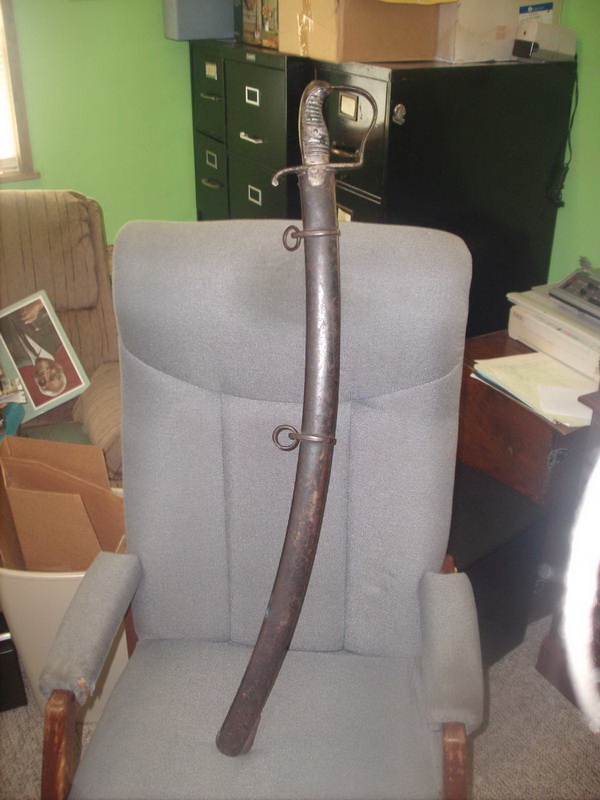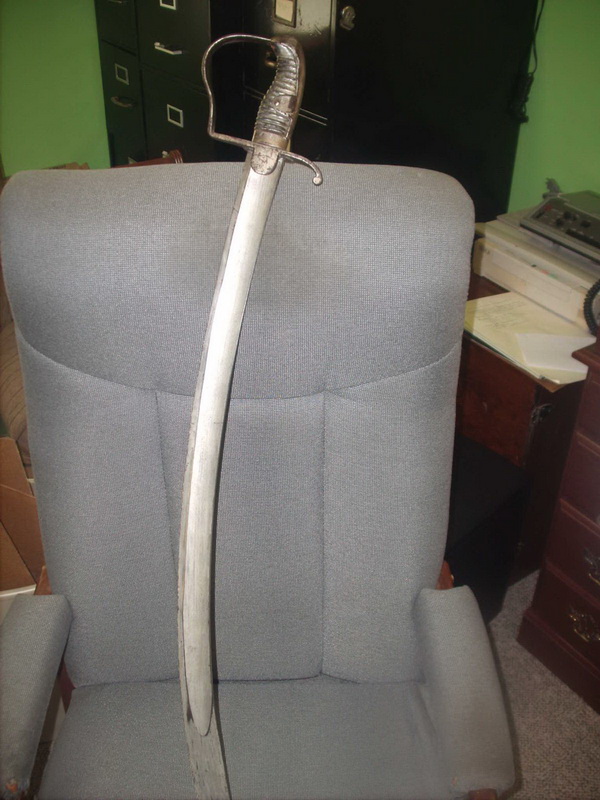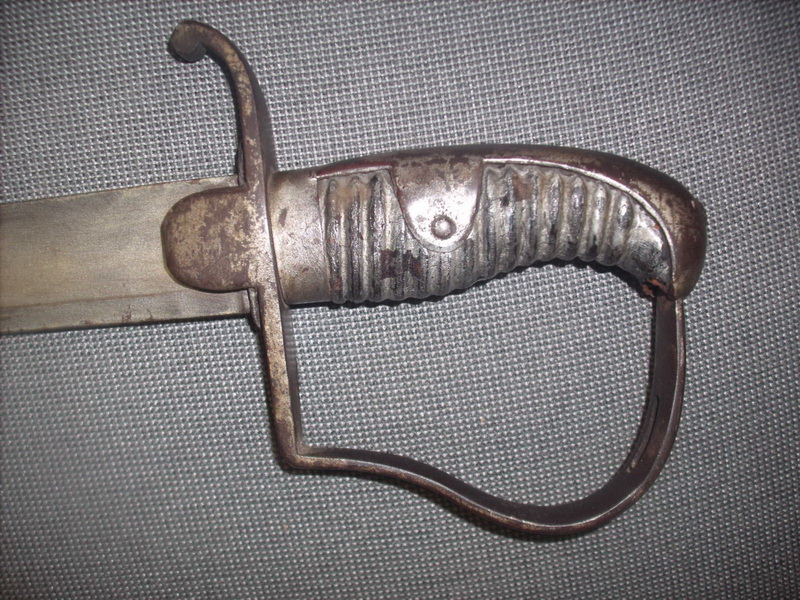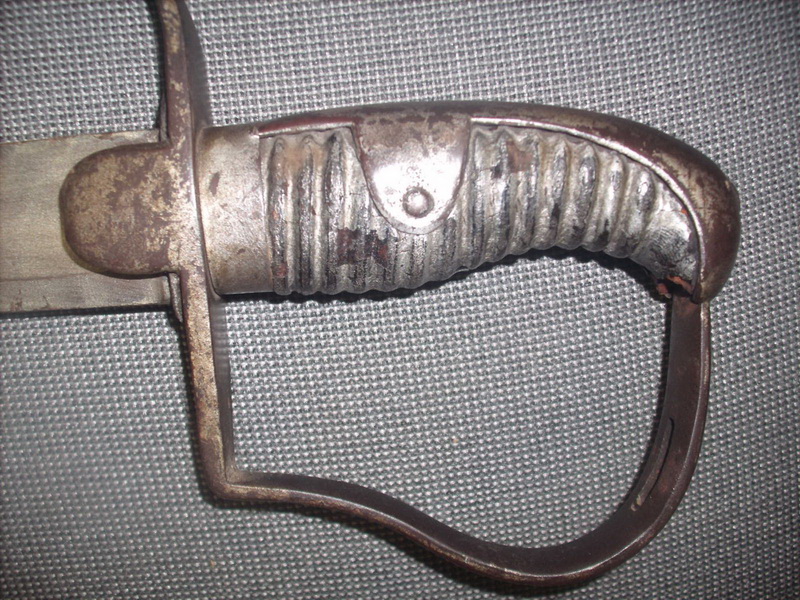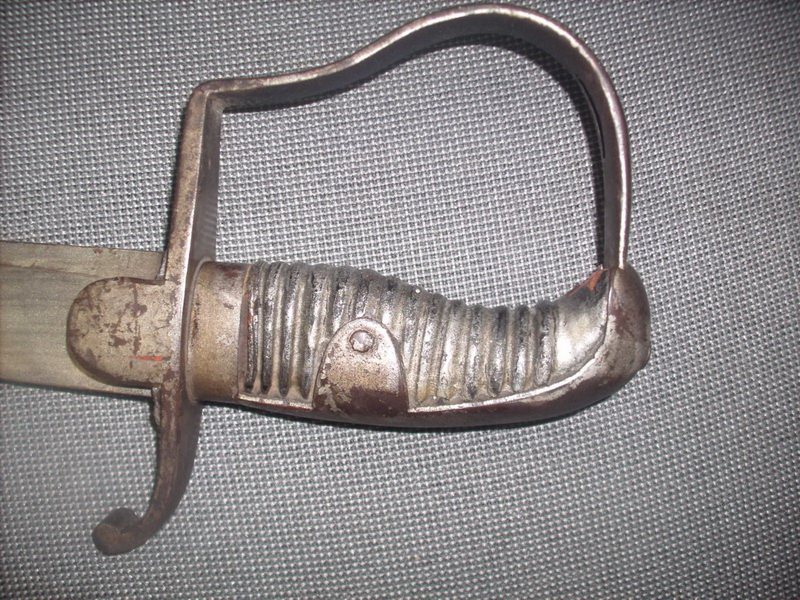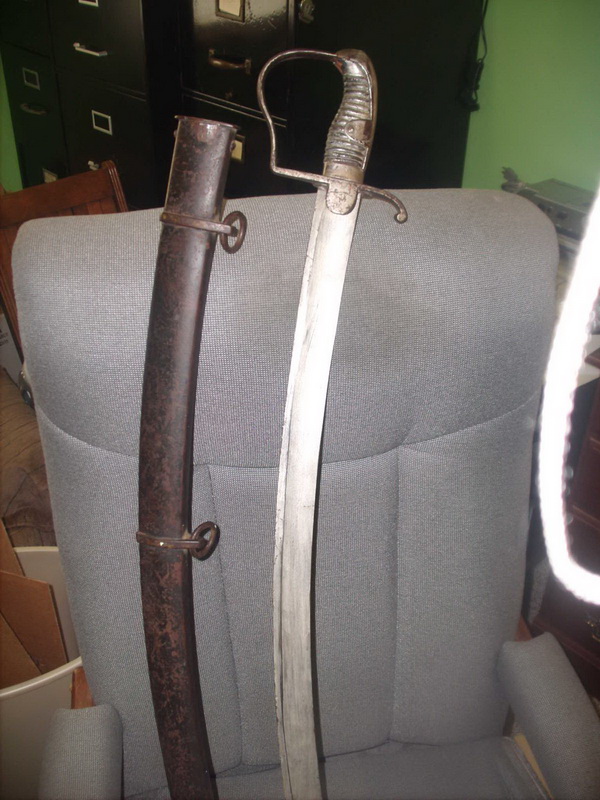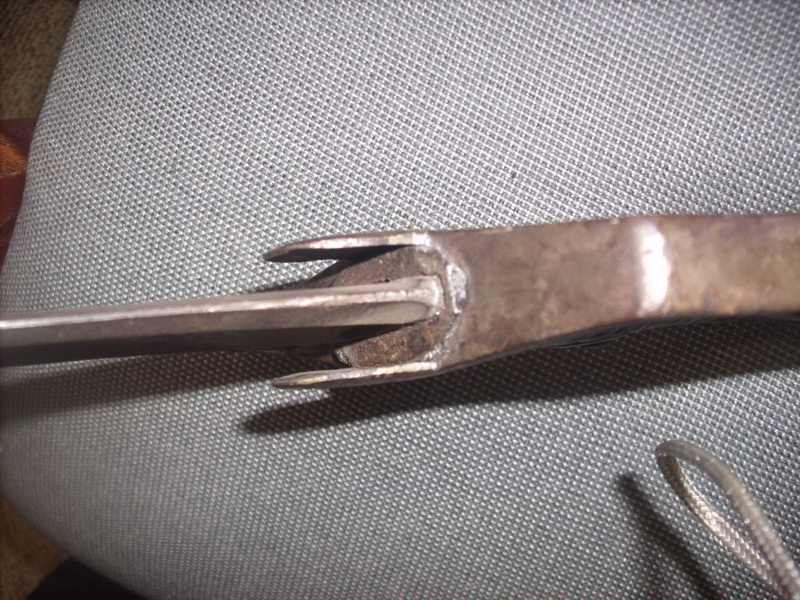Posts: 1,973 Location: Nipmuc USA
Fri 10 Jun, 2011 12:24 pm
Militia swords are a catch all convenience unless there is a record of a contract or sales. As mentioned at the start, any sword made before the dawn of the American Civil War could be argued to have been used in the war but with little basis of fact. An unmarked sword is another tally mark in the militia column but hardly convincing without the records. That whether family records, or museum attributions which often still don't related more than what someone said so.
The Starr 1818 sergeants sword pictured with that was known as militia use.
Cheers
GC.
I almost remembered the Lyon reference correctly. A good little bit of reading there
Missouri In The Civil War, Chapter VI
http://www.civilwarhome.com/missouri6.htm
"He entered Springfield with a good deal of mediaeval display. His escort, which was composed of St. Louis German butchers, remarkable for their size and ferocious aspect, was mounted on powerful iron-gray horses and armed with big revolvers and massive swords, and thus accoutered dashed through the streets of the little town, which was held by…"
